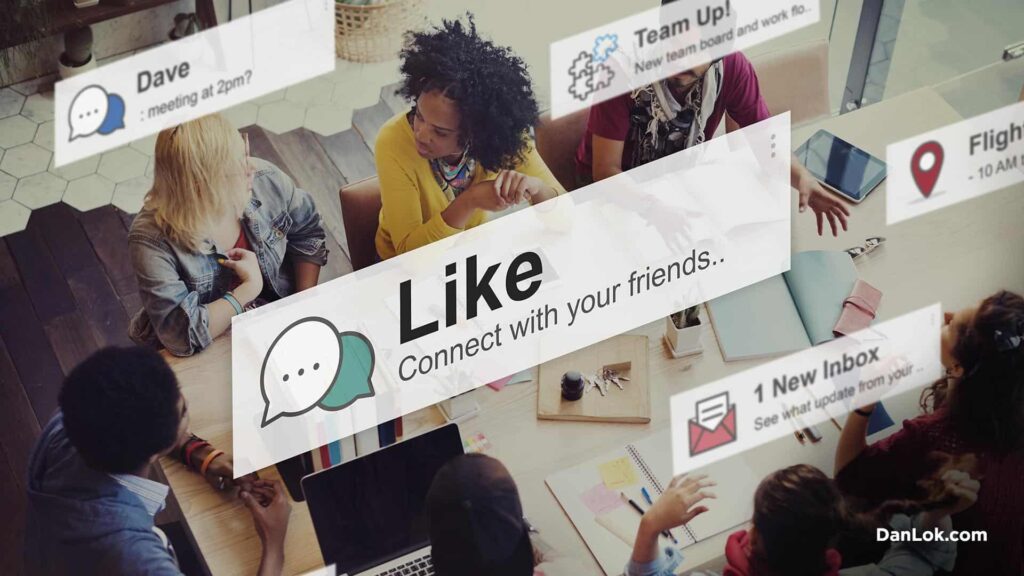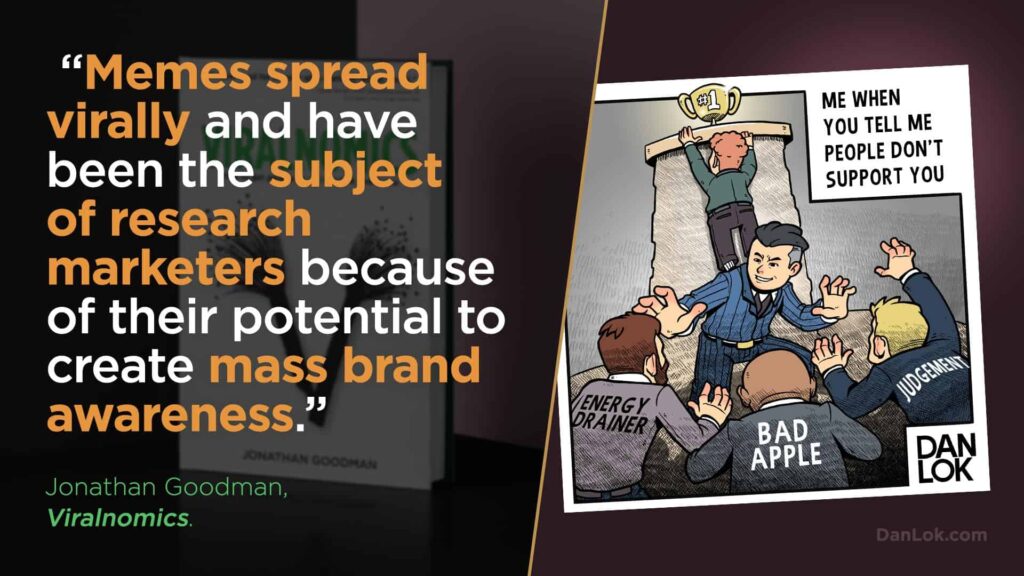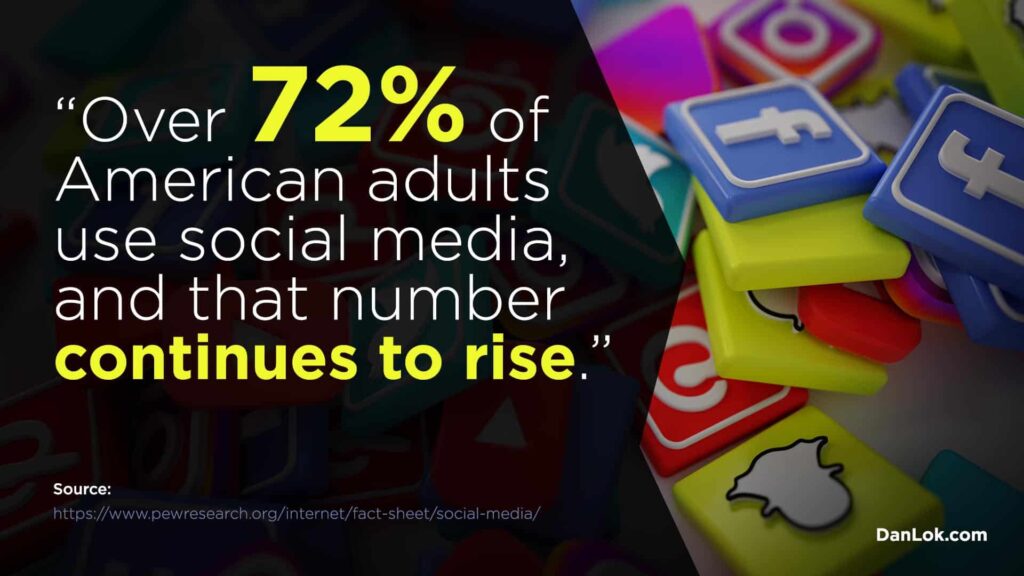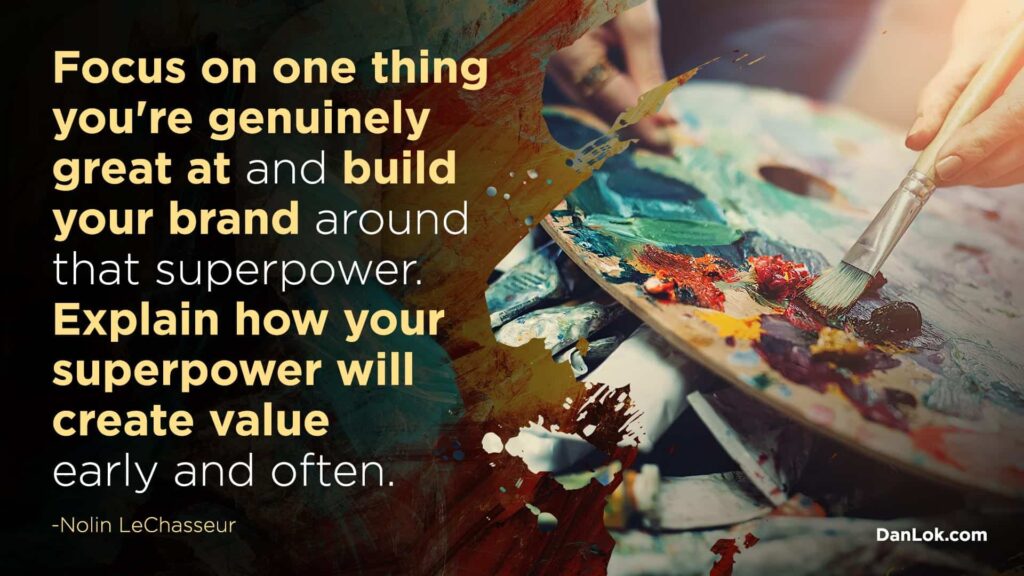Do you consciously think about how you’re building your personal brand? Are you aware of the impact it’s having on you and your business? If you’re not sure of the answer, let us help you find some clarity.
If we were to talk to people you do business with, what would they say about you? Think about your customers, vendors, team members, or your employees. Reflect on how you converse and interact with them. Do you think you would like what they have to say about you?
If we asked them to describe you in only three words, do you think their three words would match yours? If they’re not the same, it’s not necessarily a bad thing. But you may want to ask yourself, “How close would it be?”
You see, this exercise shows how you see yourself versus how other people see you. And if there is a big difference, it means there’s a gap between who you believe you are and how other people perceive you. This gap can be a problem when it comes to building your personal brand.
“Your brand is what people say about you when you are not in the room.” – Jeff Bezos

This gap indicates what people are saying about you and your brand, behind your back. Why is this so important?
A survey by HubSpot found that 69.5% of companies say review sites, social media, or word-of-mouth directly drive leads for their business. There’s a common misconception that a personal brand is a name or a logo. It’s like saying a country’s flag is a bunch of shapes and colors. In reality, it represents the history, people, values and much more. A personal brand goes far beyond the superficial name or logo. What matters is the meaning behind it.
Every person or business has associations tied to them, allowing you to describe them with just a few words. But not everyone recognizes this, and this is the disconcerting part.
Every Action You Take is Building Your Personal Brand
Imagine you have a friend, we’ll call her Stephanie. And let’s say you have been friends with Stephanie since childhood. She always says she will meet you at a certain time, but she’s always late.
 Every time you meet, you know you’ll be waiting for an extra ten minutes. This has happened so many times, you’ve learned to come prepared with work to do during the wait. This a personal brand. How?
Every time you meet, you know you’ll be waiting for an extra ten minutes. This has happened so many times, you’ve learned to come prepared with work to do during the wait. This a personal brand. How?
Because when you need something done you may start thinking, “I don’t know if I want to call her.” You’ve developed an association with Stephanie being late as not dependable. But what’s interesting is she probably does not view herself the same way.
Instead, she’ll say things like, “It’s no big deal, you know, we’re good friends. You’ve known me for a long time. If I’m 10 minutes late what’s the problem?” But if you value your time, it is a big deal.
“How you do anything is how you do everything.”
Because after so many years, you don’t know if you can trust her. Something as simple as being ten minutes late can turn into much bigger problems. And you may start thinking, If I cannot trust her with my time, can I trust her with my money? or Can I trust her to meet deadlines? Can I trust her with handling clients?
This uncertainty becomes an issue, causing unnecessary stress that you could easily avoid. Every action we take, big or small, affects the way people perceive us. Can you see how everyone has a personal brand?
“All of us need to understand the importance of branding. We are CEOs of our own companies: Me Inc. To be in business today, our most important job is to be head marketer for the brand called You.” – Tom Peters in Fast Company
Having a personal brand doesn’t require a large number of followers on Instagram or Facebook. Within your circle influence, you have a personal brand. Your friends, family, and coworkers all have developed an idea of who you are. And this is why it’s important to be conscious of how you’re building your personal brand.
What Exactly is a Personal Brand?
Your personal brand is the perception of who you are as a person. The keyword here is perception because a personal brand is not actually a person. It is the public’s perception of certain aspects of a person. Why?
Your consumers cannot know you entirely. They only see the strongest attributes you present to them. And it’s important not to confuse your personal brand with your personal image. What’s the difference?
Your personal image is what people instantly see, hear, or perceive of you at a glance. Think of it as a first impression. On the other hand, your personal brand is what people think of you over the long term. It is a more developed understanding of who you are.
Think of it this way: When someone describes you, they can use positive words such as: Dependable, honest, and intelligent. Or, they can use negative words such as: Flakey, disorganized, and procrastinator. Or, they could use a mixture of positive and negative words to describe you.
Positive or negative, these words add up to your personal brand. They are not what words you think of, but what words you are known for. Your personal brand is your personal reputation.
Why Building Your Personal Brand Is So Important
In today’s noisy world and oversaturated marketplace, it’s hard to stand out without using a strong personal brand. There is so much competition in the marketplace, and everyone makes the same generic claims.
Everyone is saying, “We’re better”, or “We’re faster”, or “We’re more reliable”. But how can the customer know this is true before trying your product or service for themselves? This is the reason why being better doesn’t provide enough motivation to make a sale. These days, consumers seek a stronger connection.
If people like you they will listen to you, but if they trust you, they'll do business with you.– Zig Ziglar. Share on X

People aren’t buying your products and services. Why? People prefer to buy from people they know, like, and trust. Which means people are actually buying you. They’re buying because they like you, not just because they like your product, and that’s what personal branding is all about.
Without a clearly defined personal brand, your customers don’t know what they’re buying. And a confused prospect doesn’t buy. But what happens when you have a strong personal brand?
What a Strong Personal Brand Can do for You
When you see the name Michael Jordan, what comes to mind? He’s the world’s greatest basketball player, of course. And if anyone is thinking of buying basketball shoes, Air Jordan products are known as top of the line. Customers can feel the connection to his greatness, even from a small logo stitched on a headband.

What about George Foreman? Even though he was an amazing boxer, you’re thinking of the George Foreman Grill. Many different brands of grills are on the market claiming to be better. But whether they are, or not, doesn’t matter. George Foreman built a strong personal brand with a fat burning reputation. It’s what everyone knows, so naturally, it’s what most people buy.
This is the power of building your personal brand. It gives you the ability to influence purchasing decisions. Even before customers are aware they need your product or services. How does it do this?
It’s All About Emotions
Personal branding emotionally predisposes consumers to enter into a business relationship with you. It appeals to their desires and touches their emotions. Instead of having a lifeless product or service, it feels more human when a personal brand is attached. This makes it more relatable. Then something very special happens. This allows you to position your product or service in a way where people feel compelled by an irresistible urge to buy. And it takes no convincing or persuading. They just love your brand that much.
In other words, a great personal brand pre-sells people. Before they meet you, your customers will already be aware of your strengths and personality. You’ll have the power to influence the decisions, attitudes, and actions of your audience. And in turn, you will receive many benefits.
7 Benefits of Consciously Building Your Personal Brand
Become Master of Your Perception
When it comes to doing business in the marketplace, perception equals reality. It doesn’t matter how great your abilities and skills are if the marketplace does not perceive them the right way.
Harris Interactive conducted a survey. It showed how 45 percent of consumers did online research and found content that made them decide not to do business with the person. This is why your online representation is so important.
Consciously building your personal brand allows you to keep growing in the direction you want. And if you are in control of your perception, you can switch directions at any time. When you determine how you are perceived, you are in charge of your destiny.
What else does this do for you?
Attract Your Ideal Audience and Opportunities
Imagine you were stuck in a business you hated, serving customers you don’t like. And it forces you to put on a facade every day. What’s worse is if the business is successful. You may start feeling conflicted. If you do, this can have a serious negative impact on your mental health and your happiness.
With the right personal branding, this is something you never have to worry about. It sets clear expectations on what your audience should expect. And this acts as a pre-filter, which attracts your ideal clients and rejects potentially bad ones.
Either they resonate with you, or they do not. Which is a very good thing. If you are selling to everyone, you are selling to no one. And it also provides a win-win situation.
Are You Building Your Personal Brand By Accident? Share on X
Building your personal brand enables you to spend more time serving clients you like. So you can focus on building the business you enjoy. And the clients that would be a bad fit will not waste your time. Your headaches become your competitor’s problem.
Create Your Own Category and Dominate
Many businesses believe having a better product is all they need to succeed. The problem with this is when you’re seen as a comparison, you’re stuck in the generic pile. To get the most sales it’s best to be in a category of your own.

Think of Apple with its iPhone and iOS. It’s a cool looking product, fun and easy to use. Even the unboxing creates a premium experience. And beyond that, there is the Apple ecosystem: iCloud, iTunes, iMessage, etc. Once you join the team Apple, it becomes difficult to leave.
So while all the other Android devices are battling each other. The iPhone’s premium positioning in its own category allows them to stay on top. This is one of the biggest benefits of building your personal brand. Even though you may be offering the same product or service, your personal brand is unique to you. It’s something your customers can not get anywhere else. And this exclusivity allows you to charge more.
Increase Your Perceived Value
This benefit can add a lot of money to your bottom line. Think about the difference between a bag from Coach, and a bag from Hermes. Are the materials different? Yes. Are the designs different? Of course. But are they different enough to justify the price difference? Objectively speaking, probably not. But the fact remains the increased perceived value of Hermes bags is remarkable.
According to Fundera 43% of customers spend more money on brands they are loyal to. And with the correct personal branding, you can reap these rewards too. It can influence and persuade your customers to justify higher pricing automatically.
Build Trust With Your Audience
Getting your audience to trust you is very valuable when building your personal brand. According to Invesp, 31% of consumers say trustworthiness is the most important brand attribute. Even more important than creativity and intelligence.
Trust is what creates lifelong, loyal customers and brand advocates. According to Fundera, 56% of customers stay loyal to brands who “get them” and 89% of customers stay loyal to brands who share their values. These are the customers who happily spread awareness of your personal brand without you asking them to. Why?
Because your personal brand will give them something to relate with. They will know who you are, what you stand for, and what you believe in. They won’t perceive you as a stranger. Instead, you’ll feel like their friend. And since both of your views are in alignment, they don’t see it as advertising. Why wouldn’t they share something they value with friends and family?
Be the Thought Leader Within Your Area of Expertise
The leader in any group does not necessarily have to be the best. What matters is if the market perceives them as the best. This is important because according to a survey done by Harris Interactive, nearly half (42 percent) of people said they Google’d someone before doing business with them.
Being recognized as the thought leader provides you with extreme credibility. Spending more time building your personal brand makes proving your claims easier. Because you are already your consumer’s main source of information.
They look to you first for their answers. Because you provide them with reliable knowledge they can trust. This further differentiates you from your competitors and increases your perceived value. But there’s one more benefit that is really exciting.
More Sales with Less Selling
Imagine gaining more sales with less selling. Or no selling at all. How is this possible? Referrals.
Are You Building Your Personal Brand By Accident? Share on X
What other people say about you is infinitely more powerful than what you can say about yourself. People will even believe the word of complete strangers over those of the company. According to a study done by BrightLocal, 76% of consumers trust online reviews as much as recommendations from family and friends. Talking about features and benefits pale in comparison to when your customers are praising your products and services. In a world as skeptical as today, building your personal branding is a necessity to thrive.
It’s Never Too Late to Start Building Your Personal Brand
With all these benefits, it’s surprising to find out that only 55% of marketers think their internal and external brand are aligned. This disconnect leaves a lot of money left on the table. But this also represents a huge opportunity to position yourself as an expert or authority figure in the marketplace. That’s why you need to start building your personal brand today.
Promoting and maintaining your personal brand does require work. You must remain consistent and transparent at all times. Otherwise, your consumers won’t know if you’re authentic.
It’s difficult to be conscious of all the actions that can affect your personal brand. Some are not as obvious such as the way you walk, talk, and the way you dress. Others are more complex such as your ability to meet obligations, customer service, or your presentation skills.
It can be overwhelming at first to identify and keep track of all these actions affecting your personal brand. But it is necessary to make a plan so you are projecting the attributes you want through all your channels.
This is why we created a digital training series where we reveal to you all our personal branding secrets. Inside you will find all of the techniques Dan Lok still uses to grow his business today. So if you’re interested in building a powerful personal brand, then check out this Personal Branding Secrets Video Training Series.




































